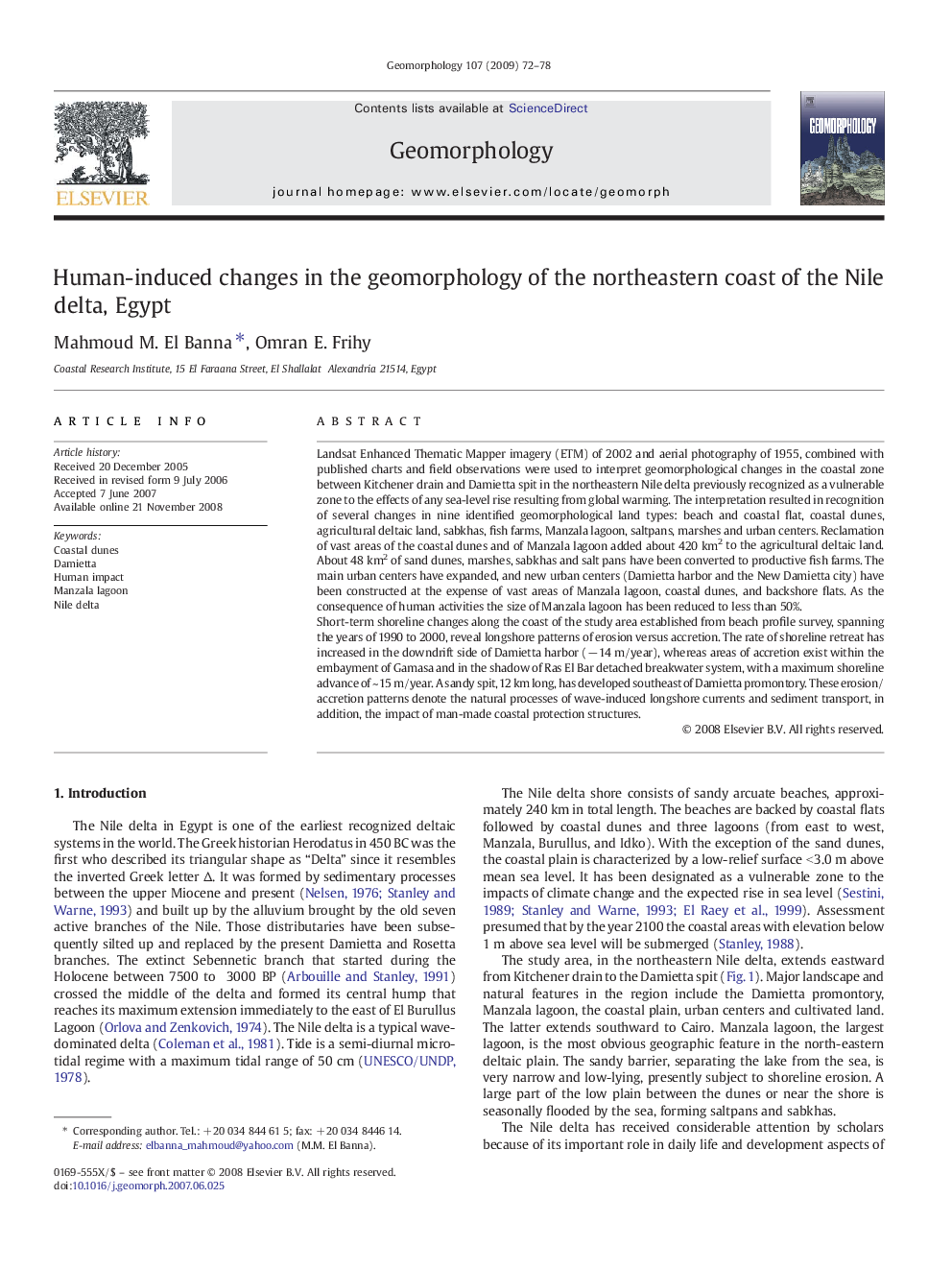| کد مقاله | کد نشریه | سال انتشار | مقاله انگلیسی | نسخه تمام متن |
|---|---|---|---|---|
| 4686473 | 1635544 | 2009 | 7 صفحه PDF | دانلود رایگان |

Landsat Enhanced Thematic Mapper imagery (ETM) of 2002 and aerial photography of 1955, combined with published charts and field observations were used to interpret geomorphological changes in the coastal zone between Kitchener drain and Damietta spit in the northeastern Nile delta previously recognized as a vulnerable zone to the effects of any sea-level rise resulting from global warming. The interpretation resulted in recognition of several changes in nine identified geomorphological land types: beach and coastal flat, coastal dunes, agricultural deltaic land, sabkhas, fish farms, Manzala lagoon, saltpans, marshes and urban centers. Reclamation of vast areas of the coastal dunes and of Manzala lagoon added about 420 km2 to the agricultural deltaic land. About 48 km2 of sand dunes, marshes, sabkhas and salt pans have been converted to productive fish farms. The main urban centers have expanded, and new urban centers (Damietta harbor and the New Damietta city) have been constructed at the expense of vast areas of Manzala lagoon, coastal dunes, and backshore flats. As the consequence of human activities the size of Manzala lagoon has been reduced to less than 50%.Short-term shoreline changes along the coast of the study area established from beach profile survey, spanning the years of 1990 to 2000, reveal longshore patterns of erosion versus accretion. The rate of shoreline retreat has increased in the downdrift side of Damietta harbor (− 14 m/year), whereas areas of accretion exist within the embayment of Gamasa and in the shadow of Ras El Bar detached breakwater system, with a maximum shoreline advance of ~ 15 m/year. A sandy spit, 12 km long, has developed southeast of Damietta promontory. These erosion/accretion patterns denote the natural processes of wave-induced longshore currents and sediment transport, in addition, the impact of man-made coastal protection structures.
Journal: Geomorphology - Volume 107, Issues 1–2, 1 June 2009, Pages 72–78